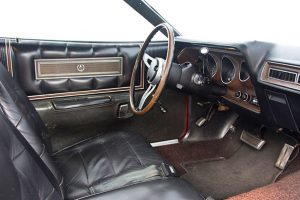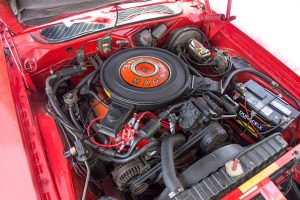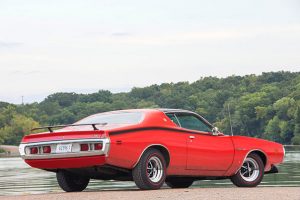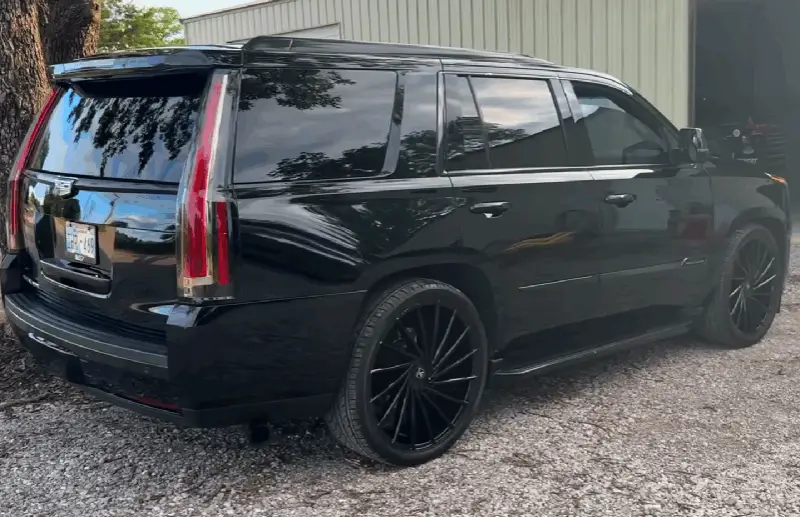Driving around in an old car brings memories to some of that are priceless, this 1971 Dodge Charger SE was brought back to the market so that the memories of million guys that are old owners of these cars will come back.
Even the it has the same and right look, the feel and also the right smell. The owner of this Charger is Wade Kawasaki. He is the President of the Coker Group, who is the mother company for Coker Tire, Honest Charley and many other automotive manufacturers.
He is also holding the highest position that a car guy can dream and think of. As a businessman, he is short in time with plenty of frequent flyer miles,but his passion for old Mopars is still strong and the time that is needed can be found easily. Even though he does not see himself as a diehard Mopar guy, a car like this can easily change a car man’s heart in a really short time.

Couple years ago, Kawasaki had a friend who moved overseas, but he had left the car in a friend’s barn. The friend (the owner) knew that he wouldn’t be able to use the car when he moves so he sold it to Kawasaki, knowing that he is going to take hood care. The car was in a surprisingly good shape even though it had some visible marks due to the years of neglect. Thankfully the potential of this machine was seen by Kawasaki and he grabbed the opportunity to buy the Charger and bring it back to Chattanooga, Tennessee.
There were needed only few weeks of work between other projects at Coker Tire and Honest Charley that were enough to bring out the Charger of its slumber. And now we can see it ready for a life back on the road once again.
After a few pumps of the throttle and a turn of the switch, the car comes to life, but don’t expect it to wake the neighbors. The original 383ci engine has stock internals and stock exhaust, so it’s quiet enough to hear yourself think, while also hearing the low-gear whine of the 727 TorqueFlite automatic transmission.

The numbers-matching engine has only a few updates, including an MSD Pro Billet distributor and ignition system to replace the ailing stock ignition components. The shop guys also replaced a few pieces of the fuel system and had to repair a leaking radiator and a sticky thermostat. All things considered, the car needed very little to be road-worthy.
Beside the drastic falling of the compression ratios in 1971, the 383ci Magnum engine cranked out 300 horsepower at 4,800 rpm and 409 lb-ft. of torque at 3,400 rpm. It isn’t a power house but it certainly offers the last glimpse of hope for the muscle car era, as 1972 would see even more significant horsepower decreases.
In fact, the 383 engine was eliminated from the option list, being replaced with a similar 400ci option. The mild-mannered combination in Kawasaki’s Charger runs well on regular unleaded gas, but tends to be a little thirsty due to the 3,700-pound curb weight and a heavy right foot.
Driving impressions from such a solid survivor are similar to the new-car tests from the early ’70s. Typical of Chrysler products from the ’70s, the power steering offers a very light wheel, which is perfect for cruising down the highway, but not ideal for spirited driving when the tail finally decides to comes around.
The car is definitely nose heavy, and offers little in the way of hard cornering capabilities. Kawasaki used his resources at Coker Tire to round up some alternative tires and wheels for the Charger in an effort to give the car a bit more grip, while also giving it a great muscle car look.

The car would’ve originally come with F78-14 tires, mounted to 14 × 5.5-inch wheels, but when Kawasaki got the car, it had a set of 15-inch Mopar Standard steel wheels with dog dish caps and cheap, generic radial tires. The new combination consists of Coker’s BFGoodrich Silvertown redline radials, sized at 215/70R15 and 235/70R15, and mounted to a set of 15 × 7- and 15 × 8-inch Magnum 500 wheels. While the Magnum 500 wheels and redlines are not “correct” for the car, they woke up the sleepy Charger in the looks department.
Despite years of storage, the car’s rubber components, vinyl top, and interior are in very good condition, a sure sign of indoor storage. The paint had seen better days, but Steve Anderson polished on the old materials until the car had a nice, consistent finish.
Even though it isn’t show-quality by today’s standards, the paint offers the right amount of wear and tear to prove this car’s originality. The trim has typical dings here and there, but the car is surprisingly well kept, even with 88,000 miles on the clock and more than 45 years under its belt.
Inside, the car is not without flaws, but once again, it’s well-preserved considering the age. The carpet is fading, and the dash pad is cracked, but that sure doesn’t take away any of the fun factor of sliding behind the wheel of this Mopar. The Tuff steering wheel has a couple of splits, but a closer look at the interior will reveal that the original heater and air conditioning controls, as well as the AM/FM radio, are in good working order.


